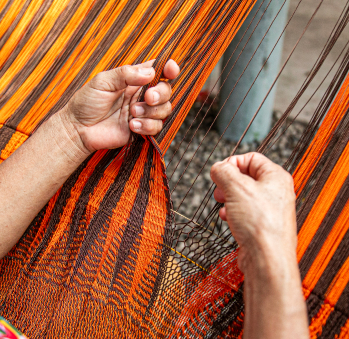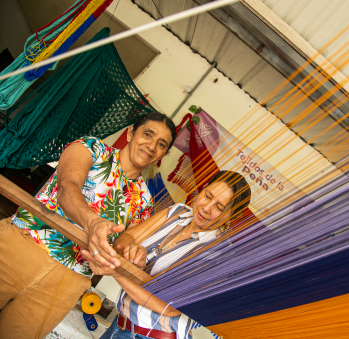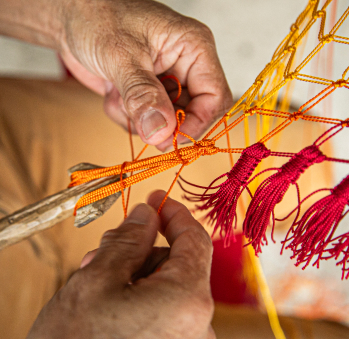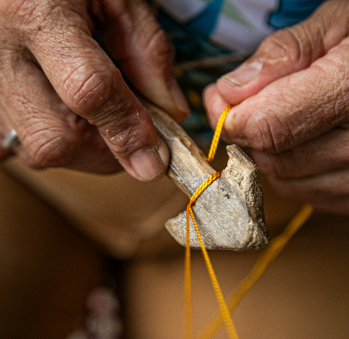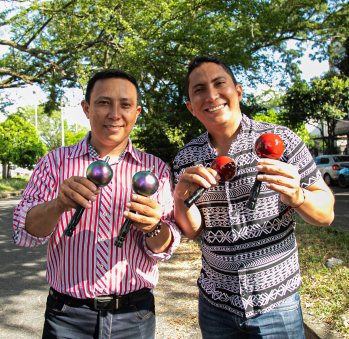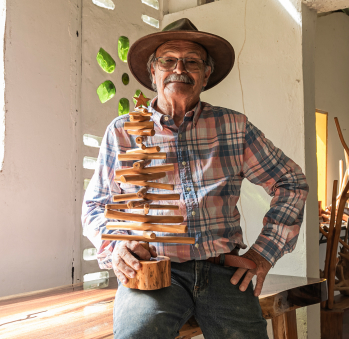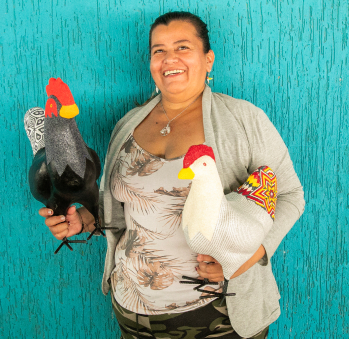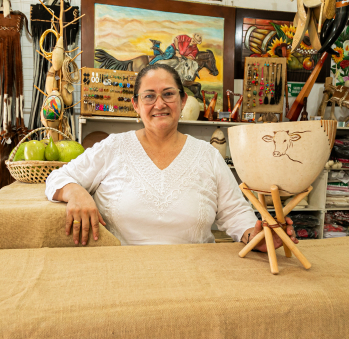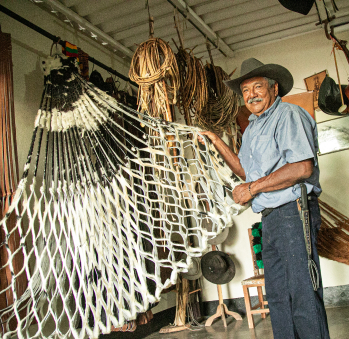Leonilde Peña y Esther Martínez
Workshop: Tejidos de la Peña
Craft: Tejeduría
Trail: Casanare Route
Location: Yopal, Casanare
Leonilde arrived in the jurisdiction of El Morro, on the outskirts of Yopal, more than 25 years ago. She was born, raised, and got married in Labranza Grande, Boyacá. However, due to rising violence, her parents moved to Casanare, and since then, she became a llanera. When she was already a grown-up, having had three children, she made the decision to complete her high school studies, which she had to pause for personal reasons. With such determination and a desire to grow, she told herself in 2016 that she would start her own business and stop working in the hydrocarbons industry, a common job in the region.
During that time, she met Esther Martínez, who learned from her father how to craft woven goods when she was six years old and had been weaving ever since. Leonilde remembered her early years when she tried crochet and embroidery and realized she was good at it. Together, they chose weaving as their path to follow. They became partners and made it their objective to create a collaborative working project alongside women heads of family and elderly women. Certainly, they worked it out. Bringing together their knowledge and enthusiasm, they began crafting traditional Casanare pieces such as chinchorros and terlenka nylon bags, a lightweight material that provides coolness, perfect for the merciless hot weather.
Leonilde’s long-standing desire had been to own a chinchorro. From a young age, she had witnessed the work of male weavers at La Guafilla penitentiary in Yopal, admiring their beauty but not being able to afford one. For decades, fashioning chinchorros has been a means of resocialization and income for the convicts and their families. After imbibing the technique for fashioning them herself, she has come to understand their value and the reason for their price—they are truly labor-intensive.
She clearly remembers the exact moment her chinchorro weaving lessons started. These kinds of hammocks are essential to the inhabitants of these lands since they function as a soft and fresh bed that keeps them away from the heat. They have become a fundamental asset for anyone venturing the plains. Its size is measured in the laps woven on the loom, counted by strands of ten threads. A standard chinchorro has 70 strands, which means 700 laps, and chinchorros for one person usually have 400 laps. While some people rest on mats, llanero people sleep on a chinchorro. Leonilde recalls the first chinchorro she and Esther wove. They were unaware that the nylon they used had a covering they had to get rid of, or else it could break the threads. So after they wove it, the whole piece blew up, and they had to start from scratch again. Leonilde was about to cry, and she remains thankful for the determination with which Esther resumed the task.
Now she laughs as she recounts what happened back then and looks back with joy on all these years they have spent delving into a craft that has taken them to regional and national fairs. Their threads no longer tangle, and they deftly weave in a variety of stitches, including the traditional campechana stitch, the punta de lanza, and the rombos. They blend different colors, and their most popular chinchorro, which is exhibited at the store La Urdimbre in the Unicentro mall in Bogotá, is the llanero sunset. It is made from 1,200 laps and fades from red and yellow to black, giving us a glimpse of the horizon of their beautiful landscape. If you pass by Yopal, don’t miss paying them a visit.
Craft
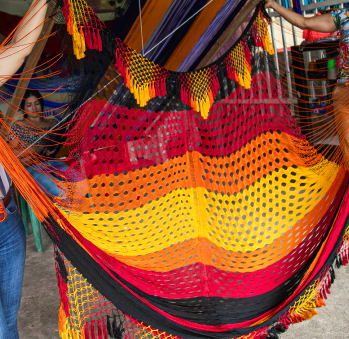
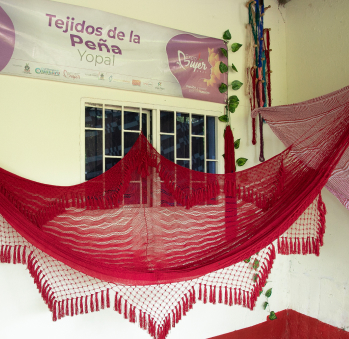
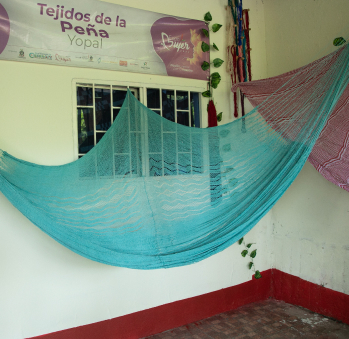



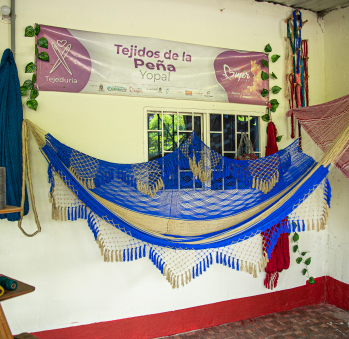







Artisans along the way
Artisans along the way
No puede copiar contenido de esta página








































